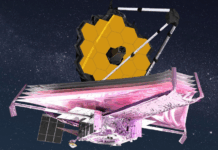The growth of blockchain technology has led to a need for different blockchain networks to communicate and share information easily, known as interoperability. As more people want to transfer assets across various blockchain platforms, the market for blockchain interoperability is growing fast.
In 2022, the market was worth $275.5 million, and it’s expected to grow by 26.8% annually until 2032. This strong growth shows how quickly this area is evolving and its crucial role in the future of digital finance. The increase also points to a growing need for better and more reliable systems that can handle transfers of data and value between different blockchain platforms.
This expansion emphasizes the importance of building a connected blockchain ecosystem. To achieve such a network, significant investment in both technology and collaborative initiatives among blockchains is essential. With this backdrop, let’s delve into the interchain stack to understand how it is shaping the future of blockchain technology.

Exploring the Basics of Interchain Communication
Interchain communication protocols are essential for enabling seamless interactions between different blockchain networks. The Inter-Blockchain Communication (IBC) protocol facilitates these interactions by allowing data and assets to be transferred securely and efficiently across chains. The protocol is built on a series of cryptographic verifications that ensure assets move securely without duplications. Understanding the structure and operation of these protocols is crucial for leveraging their full potential within the blockchain ecosystem.
Educational resources and practical guides are pivotal in advancing the understanding and implementation of IBC protocols. For specific questions or a deeper exploration of how IBC functions, reading up on IBC FAQs can provide valuable insights and detailed information. This foundational knowledge not only enhances the utility of blockchain platforms but also broadens their applicability across various industries.
A lot of projects in the cosmos ecosystem (such as Comdex, AssetMantle, Stride, and HUAHUA that hugely airdropped to $Juno holders) are wholly or partly powered by the Inter-Blockchain Communication (IBC) protocol. This also includes Evmos, Osmosis, Axela, and Juno which soared in popularity among Cosmos enthusiasts, fans, and investors. Understanding the inner workings of this stack is indeed, a knowledge worth investing in 2024 and beyond.
Key Components of the Interchain Stack
The interchain stack is structured in layers, each responsible for different aspects of blockchain interoperability. These include the application layer, transport layer, and consensus layer. Together, they form a complex framework that supports the integration of disparate blockchain networks, enabling them to function as a cohesive system.
This integration is pivotal in enabling the seamless execution of smart contracts across various platforms. Each layer is designed to address specific challenges, such as data validation, transaction consistency, and network synchronization, which are critical for maintaining the overall integrity and efficiency of the system.
By enhancing the protocol interfaces and debugging tools, developers can better manage and optimize the stack’s performance. This multi-layered approach ensures that the stack can handle the diverse requirements of different blockchain applications while maintaining robust security and efficiency.
Technological Innovations in Interchain Protocols
Recent developments have markedly upgraded the efficiency and scalability of interchain protocols. Innovations in cryptographic methods and consensus mechanisms have bolstered the security and rapidity of these protocols, making them better suited to diverse blockchain settings. Additionally, incorporating machine learning algorithms for predictive analysis could further improve protocol effectiveness and safety.
These breakthroughs play a critical role in overcoming blockchain interoperability challenges like latency and security risks. Ongoing research and development are essential for modifying existing protocols to meet the changing demands of the blockchain landscape. By consistently refining these protocols, developers facilitate increasingly complex and secure cross-chain transactions, essential for the broad acceptance of blockchain technology.
Security Measures and Protocols
Security remains a critical issue in interchain communication. The protocols used must safeguard data transfer and defend against various attacks that threaten the integrity of blockchain networks. Improved security measures include sophisticated encryption techniques and multi-signature schemes, which add extra layers of protection to thwart unauthorized access and data breaches.
Periodic security audits and compliance checks are vital in maintaining the robustness of these security measures. Developers of interchain technologies focus heavily on creating robust security measures to safeguard the ecosystem from potential threats.
Interchain Governance: Challenges and Solutions
Governance in a multi-blockchain environment presents unique challenges. Each blockchain may have its governance model, and aligning these diverse models in a way that maintains the decentralized nature of blockchain technology, while ensuring effective management of the interchain stack, is complex.
Effective governance models are critical for settling disputes and facilitating the fair distribution of resources across various blockchain networks. Current initiatives are focused on standardizing key aspects of governance without compromising the distinct characteristics and adaptability of each blockchain, aiming to create a more unified interchain environment.
Forward-thinking governance structures, like decentralized autonomous organizations (DAOs), could introduce dynamic and transparent governance methods. Meanwhile, consistent efforts and groundbreaking solutions are progressively addressing these obstacles, setting the stage for more uniform and efficient governance practices across different blockchains.

Conclusion
As we delve deeper into the development and exploration of the interchain stack, its capacity to transform the blockchain landscape is becoming more apparent. Implementing interoperable frameworks can greatly improve the efficiency of transactions and forge new pathways for cooperation between different chains.
Navigating the development of a fully interoperable blockchain ecosystem is intricate, yet the advancements we have achieved are encouraging. With ongoing collaboration and persistent innovation in technology, the interchain stack is well-positioned to significantly influence the digital environment. Looking ahead, the interchain stack not only offers the prospect of better connectivity and effectiveness but also unveils new opportunities for creative developments across the digital sector.

















